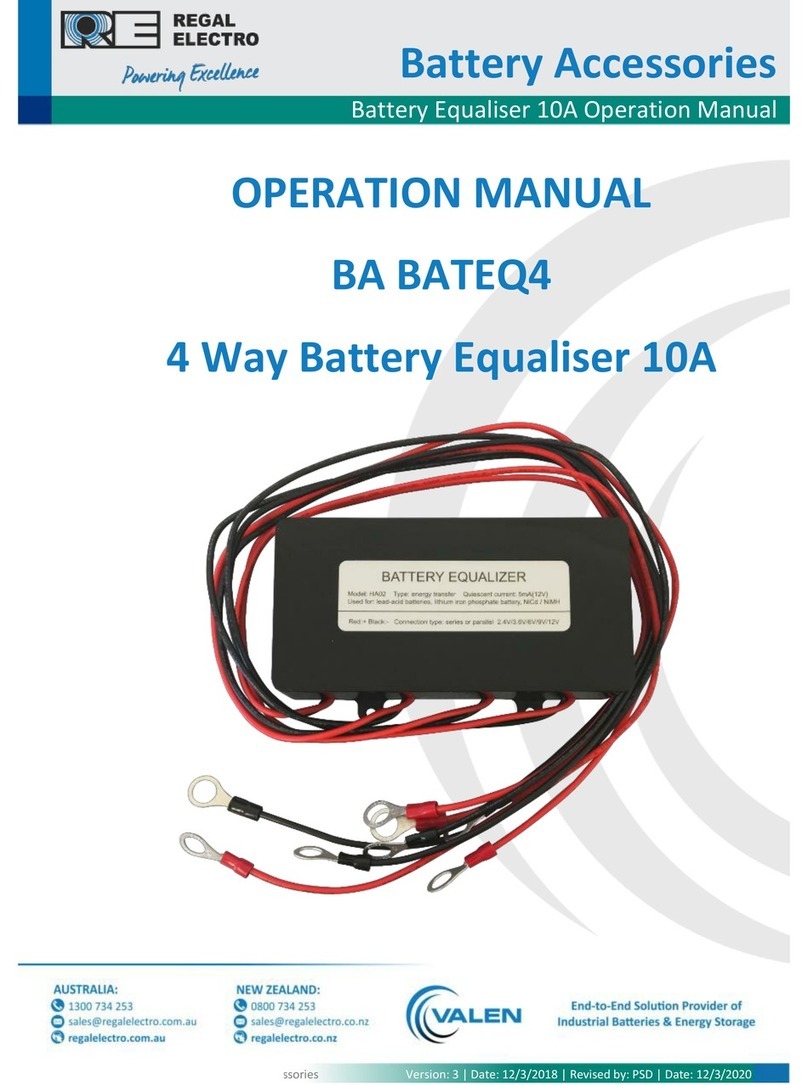truck. When all the modules have been lifted off the
pallet unbolt the base support from the wooden pallet.
Place the base support in position and drill the anchors
bolt holes down into the floor then remove the base plate
and increase the size of the bolt holes in the floor to suit
the size of the anchor bolts. Bolt down the base plate on
a level floor and check with a spirit level. On an uneven or
sloping floor it may be necessary to use shims. Bolt down
the base support and check the level again in both
directions.
Using the wiring diagram supplied, identify the bottom
module and lift with diagonal hooked straps/slings. Lift
the module with the crane or fork truck and gently lower
into place on top of the bolted down base plate. Locate
the three pins at the back of the module and push back
into place. Then bolt loosely from the front to the base
plate using the 3x M10 bolts supplied. Repeat the lifting
procedure with the next module and lower in place on
top of the bottom module. Engaging the three location
pins push back into place then bolt the second module to
the module below using the 3x M10 bolts provided.
Repeat this procedure until all the modules are in place.
Ensure that the module stack is plumb and level as the
modules are being assembled. Then torque the bolts to
11.4n.m. when the modules are fully assembled and
aligned.
Read section 5.4 then using the wiring diagram fit the bus
bars between the cells and the top terminal plates. When
connected check the battery voltage to ensure that the
cells are connected in the correct polarity. Then torque all
the terminal bolts to 11.4n.m. Fit the cell numbers
starting at the positive post with no.1. Check the cell
voltages and record with the cell ID. Fit the clear
insulating cell covers. The clear terminal plate covers
must be filled when the terminal cables are being
connected.
If the battery system consists of multiple stacks, the
stacks are positioned 12mm apart next to each other side
by side. The base plates are bolted together between
module stacks. The uppermost modules of the adjacent
stacks must be bolted back and front together using the
tie plates provided. The tie plates with captive nuts are
designed to fit in the module channels and be bolted
through the module mounting channel holes. The tie
plate modules is fitted then slid into the adjacent module
and bolted.
5.3.4 Vertical Module Installation
When modules are installed in the vertical position, the
modules are bolted to the base plate through the
bottom/back channel of the module. Attach the hooks in
the slings to the channels. Repeat this procedure with the
remaining modules. The modules must be bolted
together with 3 M10 bolts/module. When assembling
modules end to end bolt the modules together using the
tie plates supplied. It is always highly recommended to
attach the battery system to the floor using suitable floor
anchors. Note that modules installed in a vertical position
do not meet seismic zone 4 qualifications.
WARNING! Do not turn batteries upside down or tilt to
the front more than 30° as this will ‘wet’ the vent with
electrolyte which will be vented when the cell is
charged.
5.4 Electrical Connections
Proper battery electrical connections are very important
for the best battery performance and utility. Improper
battery connections can cause a loss of standby time or
even a battery fire. Follow the electrical connection
instructions carefully and review section 2.4 thoroughly
before working on the battery. Make sure that all
terminals and interconnects are cleaned and are covered
with the no-oxide grease provided.
CAUTION! Remove all jewellery before installing the
connectors on the batteries. Ensure that all tools are
insulated with vinyl electrical tape to prevent shorting.
Do not reach or lean across batteries. Remember
hazardous voltages may be present. Be aware of what
you are touching at all times. Do not hurry, take your
time.
5.4.1 Cabling Recommendations
Battery ratings are specified at the terminals of the
battery. The cabling used to connect the battery
terminals to the load has a voltage fop (when the battery
is discharging) that is dependent on cable length and
conductor size. The longer the cable run, the greater the
voltage drops.
The smaller the cable wire diameter, the greater the
voltage drop.
Therefore, to get the best performance from the battery
short, heavy cables are recommended. Do not size the
cables based on current carrying capacity only. A general
rule of thumb is to allow no more than a 20-30mV of
voltage drop/metre of cable run. As an example, if it is
10m from the battery to the load, the cable should be
sized to allow no more than 2 x 10 x .030 = 0.6V drop.
In order to help select cable sizes for load connections,
the following should be consulted:





























